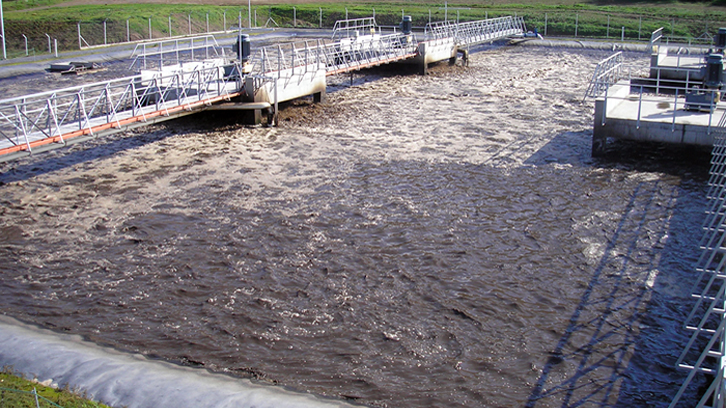Pig slurry contamination: detection and treatment of nitrates

In the last years the pig population has raised drastically in Catalonia because of the severe legislations implemented by some European countries, and the lightness of the Spanish legislation. The sudden implantation of the intensive farming has meant serious atmospheric, soil and water pollution in the surrounding areas to the farms.
The main difference between pig slurry and other animal manure is that pig slurry has a low content in dry matter. Pig slurry contains several pollutants, mainly an important excess in nitrate (NO3-) and phosphate (PO43-). Both, nitrogen and phosphorus are macronutrients, essential for plant life and their excess provokes the uncontrolled proliferation of life. In Catalonia the amount of water affected by nitrates excess is alarming, especially knowing that in the last years it has been going worse. The water bodies affected by nitrates excess are no longer drinkable. If there’s an excess of NO3- these can happen to be part of nitrocompounds (NO2X), which are mostly carcinogenic.
To detect the high concentrations of NO3- there a several possibilities: classical techniques and On-the-field techniques. The classical ones are those, which are based on discontinuous sampling and which analysis are carried out in the lab. However, On-the-field techniques use optical and microfluidic methods to carry out the continuous sampling and obtain information in real time.
For reducing pig slurry, at the moment there’s no concrete solution. Every treatment plant uses different techniques, in function of what they believe convenient. Most plants combine some of the most popular techniques, among which are the phase separation, the nitrification-denitrification and the composting. There are treatment plants that are engaged in pig slurry transformation, to reuse it as fertilizers. Other plants only treat the pig slurry and store it, and others transform it into biogas. In the use of pig slurry as fertilizer the steps taken during the treatment are very important, because if they aren’t well done, it can provoke severe pollution in the soils where applied. During treatment the Carbon/Nitrogen ratio is increased by mixing pig slurry with other organic waste, thus improving the fertilizer final quality.
Regarding already polluted waters, there are several pathways to remove the NO3-. Mainly separation and transformation techniques are used. Separation techniques don’t completely remove nitrates. It separates the NO3- from the sample, to reuse them in the chemical industry. However, transformation techniques consist of removing nitrates by transforming them into N2, an inert and nonpolluting gas.
According to the technical report “Avaluació de la problemàtica originada per l’excés de nitrats d’origen agrari en les masses d’aigua subterrània a Catalunya”, carried out by the Catalan Water Agency on Març 2016, there are 422 municipalities in Catalonia, which underground waters have an important excess of nitrates (NO3-). It is an increasingly serious and it’s very important to work from all sectors to put an end to it.
b) Department of Catalan Philology, Unit of Information Science, Universitat Autònoma de Barcelona, 08193 Bellaterra, Barcelona, Spain
References
-I. Regada Platz, La contaminació per nitrats provinents de purins, Treball de fi de Grau, Departament of Chemistry, Faculty of Sciences, Universitat Autònoma de Barcelona, 2016.
-Informe tècnic: Avaluació de la problemàtica originada per l’excés de nitrats d’origen agrari en les masses d’aigua subterrània a Catalunya, Agència Catalana de l’Aigua, Departament de Control i Qualitat de l’Aigua, Barcelona, Març de 2016.
-L. Rovira, Eliminación catalítica de nitratos y bromatos en aguas, Proyecto Final de Máster en la Universidad Politécnica de Valencia, 2012.
-Ludan Renewable Energy España, Producción y aprovechamiento actual de purines a nivel nacional y regional. Potencial desarrollo a corto y medio plazo, Valencia, 2011.
- X. Flotats, J. Palatsi, A. Bonmatí, E. Campos, Digestión anaerobia de purines de cerdo y codigestión con residuos de la industria alimentaria, Monografías de actualidad, 65, pp 51-65, 2001.

